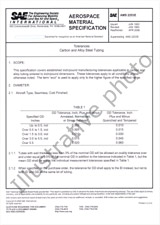We need your consent to use the individual data so that you can see information about your interests, among other things. Click "OK" to give your consent.

SAE AIR1387D
Designing with Elastomers for use at Low Temperatures, Near or Below Glass Transition
Translate name
STANDARD published on 1.1.2016
The information about the standard:
Designation standards: SAE AIR1387D
Publication date standards: 1.1.2016
SKU: NS-653670
Country: American technical standard
Category: Technical standards SAE
Annotation of standard text SAE AIR1387D :
To ensure success in design of elastomeric parts for use at low temperature, the design engineer must understand the peculiar properties of rubber materials at these temperatures.
There are no static applications of rubber. The Gaussian theory of rubber elasticity demonstrates that the elastic characteristic of rubber is due to approximately 15% internal energy and the balance, 85%, is entropy change. In other words, when an elastomer is deformed, the elastomer chain network is forced to rearrange its configuration thereby storing energy through entropy change. Thermodynamically, this means that rubber elasticity is time and temperature dependent (Reference 25).
The purpose of this report is to provide guidance on low temperature properties of rubber with the terminology, test methods, and mathematical models applicable to rubber, and to present some practical experience. In this way, it is hoped that mistakes can be avoided, particularly in selection of rubber materials, enabling the design engineer to weigh low-temperature material properties together with the many other factors involved in the design process.
SUBJECT TAXONOMY: Elastomers, Materials properties
SUBFILE: Aerospace
TYPE OF DOCUMENT: Aerospace Standard
We recommend:
Technical standards updating
Do you want to make sure you use only the valid technical standards?
We can offer you a solution which will provide you a monthly overview concerning the updating of standards which you use.
Would you like to know more? Look at this page.



 Cookies
Cookies
